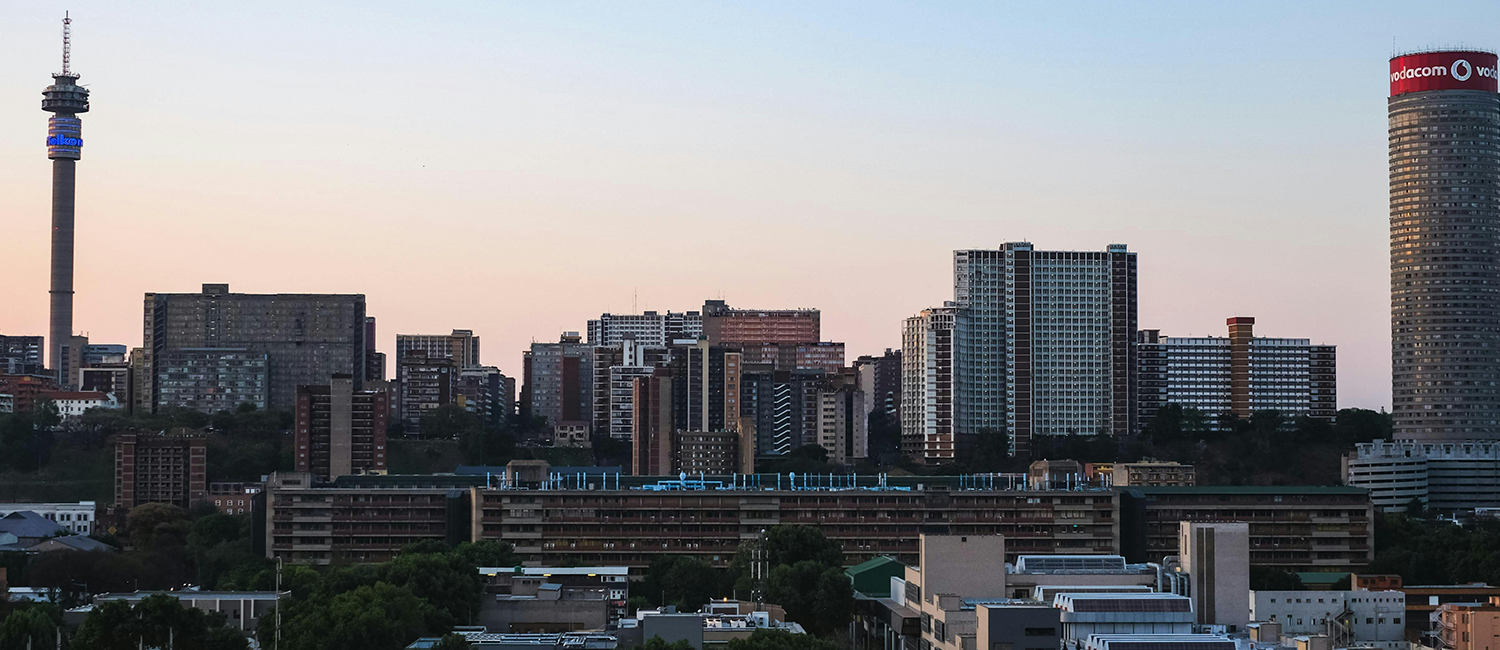GETTING a lot of people around a densely populated city, while still cutting greenhouse gas emissions and keeping those people happy, had local and international speakers locked in debate around the Our Cities Ourselves exhibition.
The roaming exhibition is of architects’ visions of 10 international cities in 2030. It began its tour of Joburg at the Johannesburg Development Agency offices in the Bus Factory in Newtown.
With the full title of Our Cities Ourselves: The Future of Transportation in Urban Life, the exhibition challenges the architects to envision 10 cities in 2030, centred on safe and enjoyable walking, cycling and public transport. After its stint at the Bus Factory, it is now on in Orlando East, Soweto until 4 March; from 8 to 11 March it will be at Wits University; and from 15 to 20 March it will be at Museum Africa in Newtown.
The seminar was held on 25 February at the Bus Factory. Speakers were the likes of Nkosinathi Manzana, the chief operating officer of the JDA; Nopasika Lila, its non-executive director; Rehana Moosajee, the portfolio head of transportation in Johannesburg; Lisa Seftel, the City’s executive director of transport; Sithole Mbanga, a local government specialist and the chief executive officer of the SA Cities Network; Walter Hook, the executive director of the Institute for Transportation and Development Policy (ITDP); Ikemeleng Architects’ Jonathan Manning, the construction project manager of Joburg’s Orlando East development; Johan Fourie, from Osmond Lange Architects and Planners; Janette Sadik-Khan, the commissioner of the New York City department of transportation; urban planner Amanda Burden, the chair of the New York City planning commission and director of that city’s department of planning; Phillip Harrison, the chair in development, planning and modelling at Wits University; and Edgar Pieterse, the director of the African Centre for Cities at the University of Cape Town.
Moosajee, the first speaker, noted that it was an important gathering. She reiterated the executive mayor’s words that, “if you don’t have a mental picture in your head of what your city must look like, there’s no way you’re going to build that city”.
“Our city in particular, coming from the history that we do of power relations and power dynamics, may it be race, class and gender, means that the way in which transport power relations play themselves out, does suggest that those some describe as the lowest rungs of society, are not factored into our plans.”
Those who could not afford private cars, who made up two-thirds of the city’s population, should be taken into account, Moosajee said.
Ten Principles
Hook began his presentation by explaining the ITDP’s Ten Principles of Sustainable Transport, which the architects used to guide their design choices:
- “Walk the walk”, which involves creating pedestrian environments;
- “Powered by people”, which means creating great environments for bicycles and other non-motorised vehicles;
- “Get on the bus”, which involves providing great, cost-effective public transport;
- “Cruise control”, which means providing access for clean motor vehicles at safe speeds and in reduced numbers;
- “Deliver the goods”, which means servicing the city in the cleanest and safest manner;
- “Mix it up” which means mixing people and activities, buildings and spaces;
- “Fill it in”, which means building dense, people- and transit-orientated districts that are desirable;
- “Get real”, which means preserving and enhancing the local natural, cultural, social and historical assets;
- “Connect the blocks”, which involves making walking trips direct, interesting and productive with small, permeable buildings and blocks; and
- “Make it last”, or building for the long term.
New York
For her part, Sadik-Khan spoke about the New York transport department’s strategic goals, which include cutting annual traffic fatalities by 50 percent; implementing systems comprising rapid bus lines; doubling bicycle commuting between 2007 and 2010; instituting complete street design policies; instituting programmes to treat streets as public spaces; and reducing agency energy and vehicle use.
Since initiating these goals, pedestrian volumes had risen in Herald and Times squares; travel times had improved; there were fewer injuries of motorists and pedestrians; and public art had been placed across the city to make more visually appealing.
Seftel spoke about South African national legislation, which required the City develop a five-year Integrated Transport Plan (ITP). It had to include data on origins and destinations, traffic flows and public transport services and facilities.
She said Johannesburg was now embarking on its new ITP, with its first step being the gathering of information on the introduction of the new modes of transport such as Rea Vaya and the Gautrain, as well as on the increase in urbanisation and changing residential patterns.
The JDA has been involved in the development of Rea Vaya, specifically in the construction of dedicated bus ways and stations. These projects were managed by Manzana.
It was concluded at the seminar that reducing the need for private motor vehicles and allowing people to move freely was important for all cities which were attempting to create a sustainable future that accommodated all their residents.
The exhibition
In their exhibition submissions, the architects envisioned sustainable futures for 10 cities: Ahmadabad, India; Budapest, Hungary; Buenos Aires, Argentina; Dar es Salaam, Tanzania; Guangzhou, China; Jakarta, Indonesia; Johannesburg, South Africa; Mexico City, Mexico; New York City, United States; and Rio De Janeiro, Brazil. These cities are projected to experience at least a doubling of residents by 2030, and are mostly in the developing world.
Orlando East is the subject of Joburg’s contribution, more specifically, a vision of the Soweto suburb in 2030. The end result is imagined as a vibrant, high density node with good quality retail and public spaces that operate 24-7.
Spearheaded by the ITDP, which is based in New York but works around the world, the architects were asked to propose smart transportation futures grounded in current urban conditions, which show safe, vibrant streets that promote social and economic equality; privilege mass transit, bicycles and pedestrians; and drastically reduce greenhouse gas emissions.
The institute proposes an alternative path, which underpins the images in the exhibition, using its Ten Principles of Sustainable Transport, which were developed with Jan Gehl, a Danish urbanist.
Their vision of Orlando East, say architects from Osmond Lange and Ikemeleng Architects, includes turning into a gathering place, the vacant lot that now connects the Mooki Street Rea Vaya Station and the Orlando Metrorail Station. In their vision, Station Square is framed by a clinic, post office and other institutions, with a circular bike station allowing people to safely rent or store their bikes as they commute to the “new downtown or walk around the neighbourhood” which is now rife with activity.
At present divided into isolated institutional, residential and transport districts, they envision that in 2030 the area will be filled with new mix-use spaces and higher density developments to connect these zones. A new pedestrian street will also be developed that includes a piazza lined with ground-floor retail and community functions linking Mooki Street to Station Square to the stadium.

